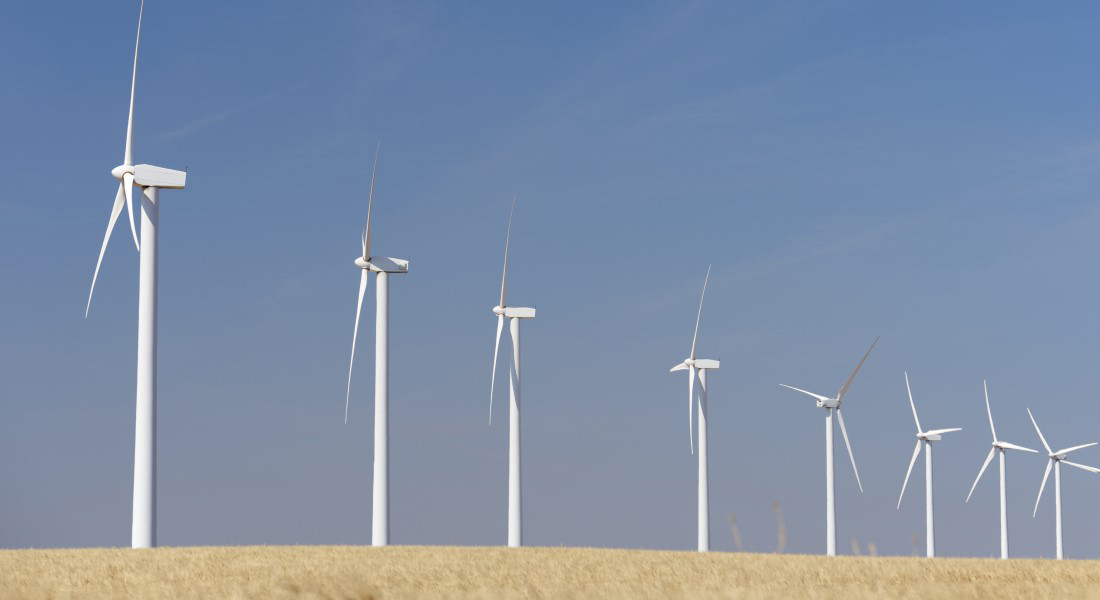Green versus green: Can wind turbines and nature interests go hand in hand?
The production of renewable energy on land must quadruple in Denmark by 2030. Simultaneously, others are campaigning for more nature parks and greater biodiversity. A new project will investigate how different interests can come together in the development of energy parks.

There is competition for the limited land areas in Denmark, and it's not going to get any less in the coming years. With last year's political agreement to quadruple the production of renewable energy on land by 2030, areas must be found for 10-15 large energy parks with wind turbines or solar cells. An area that could exceed 400 square kilometres.
But can the construction of large energy parks with wind turbines or solar panels go hand in hand with other green ambitions to create space for more nature parks and greater biodiversity?
This question is at the centre of a new project anchored at the Department of Anthropology at the University of Copenhagen and Aalborg University, which is supported with DKK 2.5 million by Innovation Fund Denmark and the partnership MissionGreenFuels (see box).
"We see more green-versus-green conflicts emerging, where some want to leave more space for nature, while others want wind turbines, solar cells or PtX plants. The project focuses on this competition for land," says Associate Professor Simon Lex, who is leading the project together with Anders Horsbøl from Aalborg University.
"At the same time, it is a major challenge that local communities often feel that a distant authority in the big cities is pulling something over their heads. This creates a breeding ground for resistance and conflict, which we may already see examples of when the Danish government in the near future presents its proposal for where in the country the new energy parks can be located."
Room for all considerations
The project's ambition is therefore to provide concrete and usable scenarios on how different green interests and agendas can interact in the construction of new energy parks:
What processes are needed, who should they include, and how should the energy parks basically be designed? For example, wind farms can have some negative effects on wildlife, but they also provide space for alternative uses as the turbines only occupy a very small part of the underlying land.
"We hope to help promote solutions that take into account both energy production and biodiversity, but also local interests such as the need for recreational areas or agricultural interests. We will develop a prototype for multi-use areas that accommodate these different interests and considerations," explains Simon Lex.
High risk of delays
The project is a direct extension of two other Innovation Fund Denmark-supported projects in which Simon Lex, in collaboration with a number of researchers, is investigating the local challenges of establishing large production facilities in connection with the green energy transition.
Conflicts of interest drag out decision-making processes.
The two already initiated projects have a particular focus on citizen involvement in the construction of renewable energy plants and 'power-to-x plants' that convert green electricity into transportable and flexible forms of energy. The new project differs by shifting the focus from citizens and their possible resistance to the potential for collaboration among green stakeholders in the planning of new wind and solar parks.
But according to Simon Lex, the fundamental challenge remains the same. It's not enough to have the right technological solutions in place if the green transition is to succeed. It also requires public support and co-operation between seemingly disparate stakeholders.
"Conflicts of interest drag out decision-making processes, even within municipalities. If we don't find good ways to plan and design the areas that take climate, nature and local communities into account, construction will take much longer," he says.
Contact
Simon Westergaard Lex
Associate Professor
Department of Anthropology
E-mail: simon.lex@anthro.ku.dk
Phone: 35 32 34 58
Mobile: 31 43 28 39
Søren Bang
Journalist
Faculty of Social Sciences
E-mail: sba@samf.ku.dk
Mobile: 29 21 09 73
